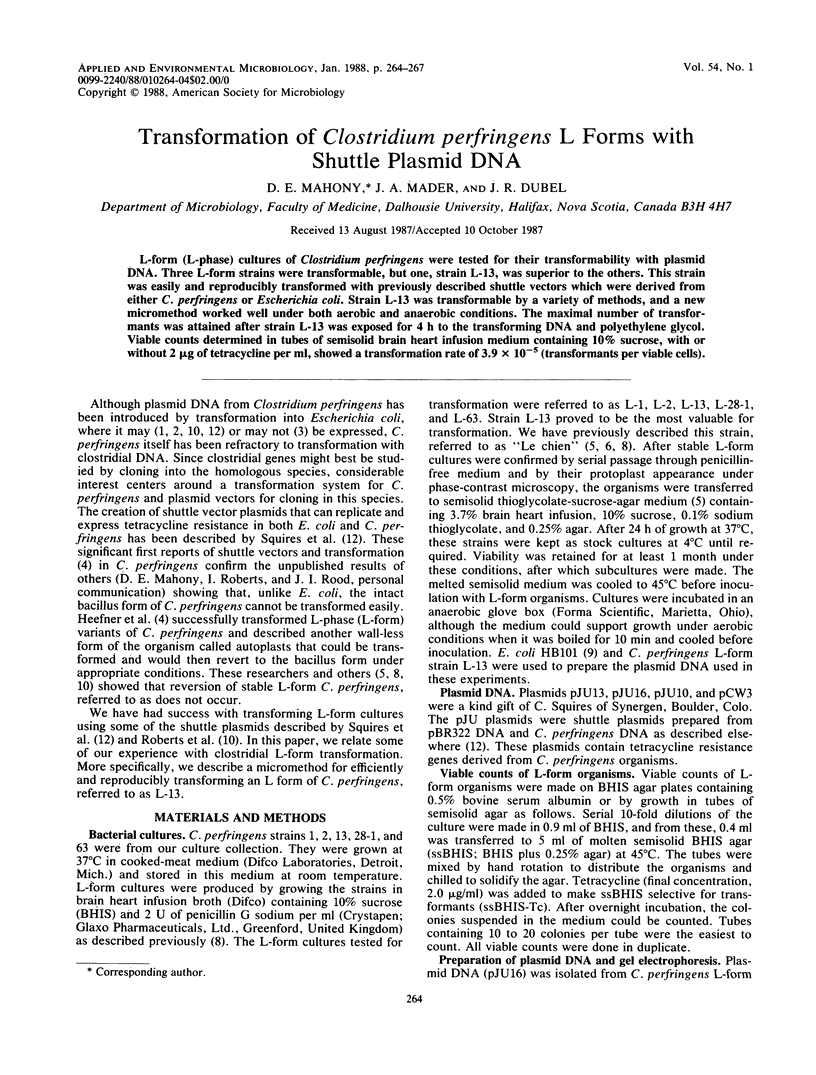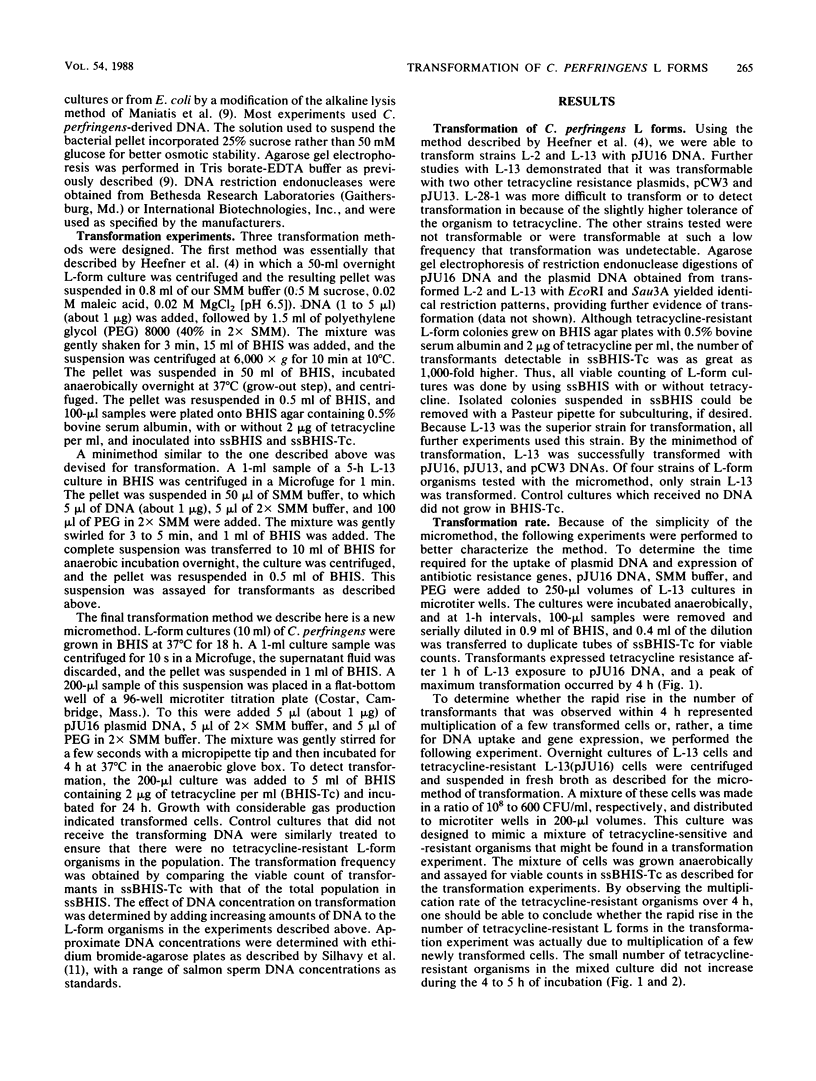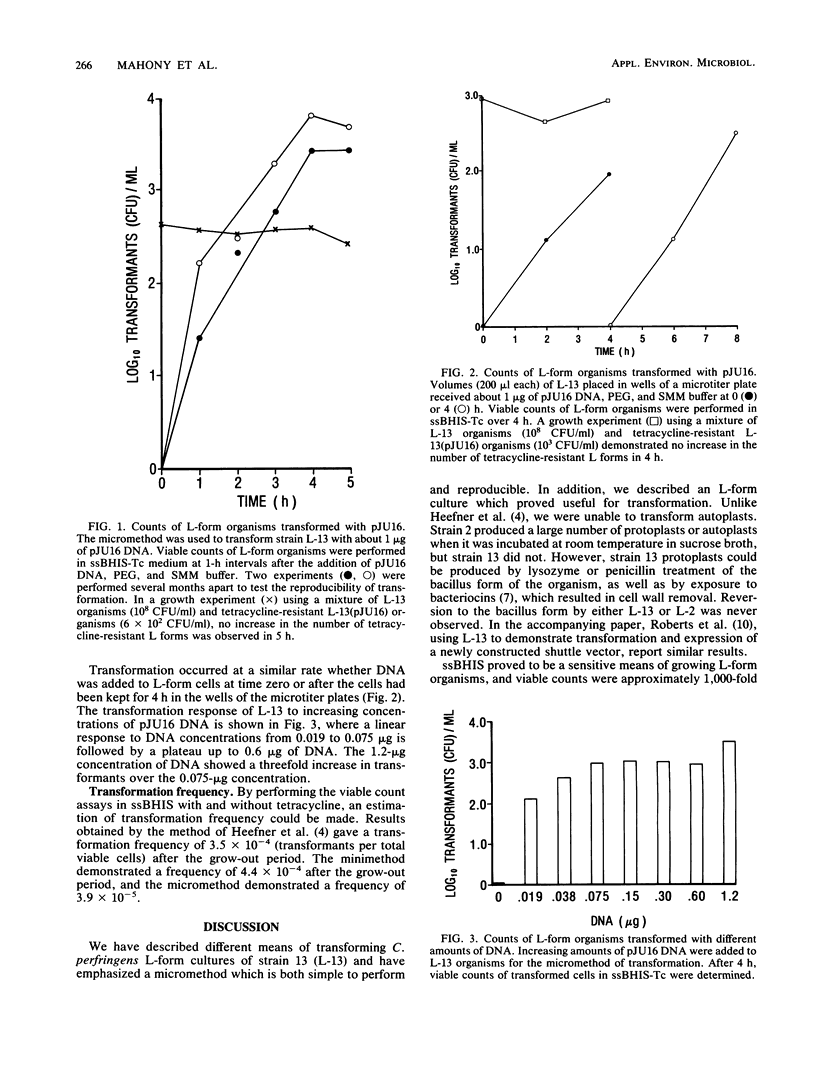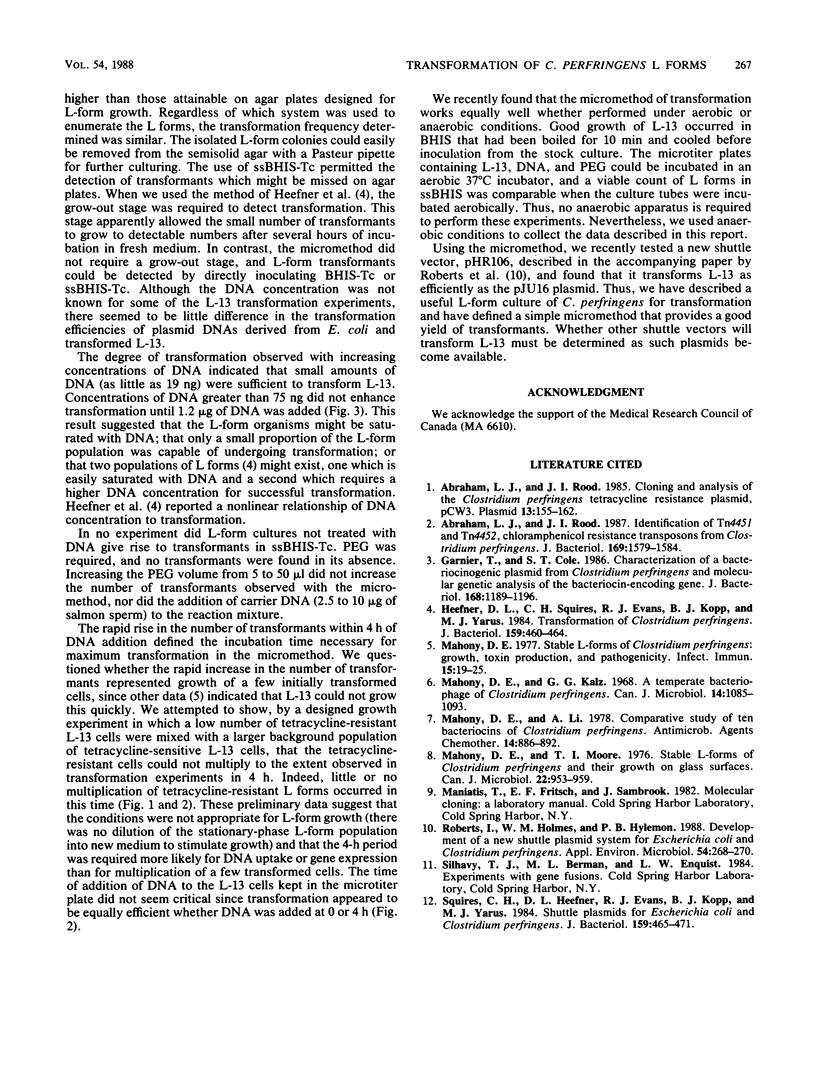Abstract
L-form (L-phase) cultures of Clostridium perfringens were tested for their transformability with plasmid DNA. Three L-form strains were transformable, but one, strain L-13, was superior to the others. This strain was easily and reproducibly transformed with previously described shuttle vectors which were derived from either C. perfringens or Escherichia coli. Strain L-13 was transformable by a variety of methods, and a new micromethod worked well under both aerobic and anaerobic conditions. The maximal number of transformants was attained after strain L-13 was exposed for 4 h to the transforming DNA and polyethylene glycol. Viable counts determined in tubes of semisolid brain heart infusion medium containing 10% sucrose, with or without 2 micrograms of tetracycline per ml, showed a transformation rate of 3.9 X 10(-5) (transformants per viable cells).
Full text
PDF



Selected References
These references are in PubMed. This may not be the complete list of references from this article.
- Abraham L. J., Rood J. I. Cloning and analysis of the Clostridium perfringens tetracycline resistance plasmid, pCW3. Plasmid. 1985 May;13(3):155–162. doi: 10.1016/0147-619x(85)90038-1. [DOI] [PubMed] [Google Scholar]
- Abraham L. J., Rood J. I. Identification of Tn4451 and Tn4452, chloramphenicol resistance transposons from Clostridium perfringens. J Bacteriol. 1987 Apr;169(4):1579–1584. doi: 10.1128/jb.169.4.1579-1584.1987. [DOI] [PMC free article] [PubMed] [Google Scholar]
- Garnier T., Cole S. T. Characterization of a bacteriocinogenic plasmid from Clostridium perfringens and molecular genetic analysis of the bacteriocin-encoding gene. J Bacteriol. 1986 Dec;168(3):1189–1196. doi: 10.1128/jb.168.3.1189-1196.1986. [DOI] [PMC free article] [PubMed] [Google Scholar]
- Heefner D. L., Squires C. H., Evans R. J., Kopp B. J., Yarus M. J. Transformation of Clostridium perfringens. J Bacteriol. 1984 Aug;159(2):460–464. doi: 10.1128/jb.159.2.460-464.1984. [DOI] [PMC free article] [PubMed] [Google Scholar]
- Mahony D. E., Kalz G. G. A temperate bacteriophage of Clostridium perfringens. Can J Microbiol. 1968 Oct;14(10):1085–1093. doi: 10.1139/m68-183. [DOI] [PubMed] [Google Scholar]
- Mahony D. E., Li A. Comparative study of ten bacteriocins of Clostridium perfringens. Antimicrob Agents Chemother. 1978 Dec;14(6):886–892. doi: 10.1128/aac.14.6.886. [DOI] [PMC free article] [PubMed] [Google Scholar]
- Mahony D. E., Moore T. I. Stable L-forms of Clostridium perfringens and their growth on glass surfaces. Can J Microbiol. 1976 Jul;22(7):953–959. doi: 10.1139/m76-138. [DOI] [PubMed] [Google Scholar]
- Mahony D. E. Stable L-forms of Clostridium perfringens: growth, toxin production, and pathogenicity. Infect Immun. 1977 Jan;15(1):19–25. doi: 10.1128/iai.15.1.19-25.1977. [DOI] [PMC free article] [PubMed] [Google Scholar]
- Roberts I., Holmes W. M., Hylemon P. B. Development of a new shuttle plasmid system for Escherichia coli and Clostridium perfringens. Appl Environ Microbiol. 1988 Jan;54(1):268–270. doi: 10.1128/aem.54.1.268-270.1988. [DOI] [PMC free article] [PubMed] [Google Scholar]
- Squires C. H., Heefner D. L., Evans R. J., Kopp B. J., Yarus M. J. Shuttle plasmids for Escherichia coli and Clostridium perfringens. J Bacteriol. 1984 Aug;159(2):465–471. doi: 10.1128/jb.159.2.465-471.1984. [DOI] [PMC free article] [PubMed] [Google Scholar]


